Is Your Greece Factory Struggling with Safe Transfer of Unstable Loads in Coastal Factories? Try a Pallet Changing Machine
Are you tired of seeing profits shrink due to damaged goods? In coastal factories, like many I've visited in Greece, the salty, humid air can be your worst enemy. It weakens wooden pallets, turning a stable stack of products into a costly accident waiting to happen. Every time a load shifts or a pallet breaks, it’s not just about the lost product. It’s about the cleanup, the production delays, and the very real risk of injury to your team. This constant worry eats away at your efficiency and peace of mind. What if you could eliminate this problem at its source? Imagine a way to safely and automatically swap out those unreliable pallets for strong, stable ones, protecting both your products and your people.
Yes, a pallet changing machine is a highly effective solution for safely transferring unstable loads, especially in the challenging environment of a coastal factory. These machines work by mechanically clamping and supporting the entire load. They then invert it or push it smoothly onto a new, more durable pallet, such as one made of plastic. This process eliminates the risks of manual handling, prevents product damage from collapses, and ensures that weak or contaminated pallets are removed from your logistics chain before they cause a problem.
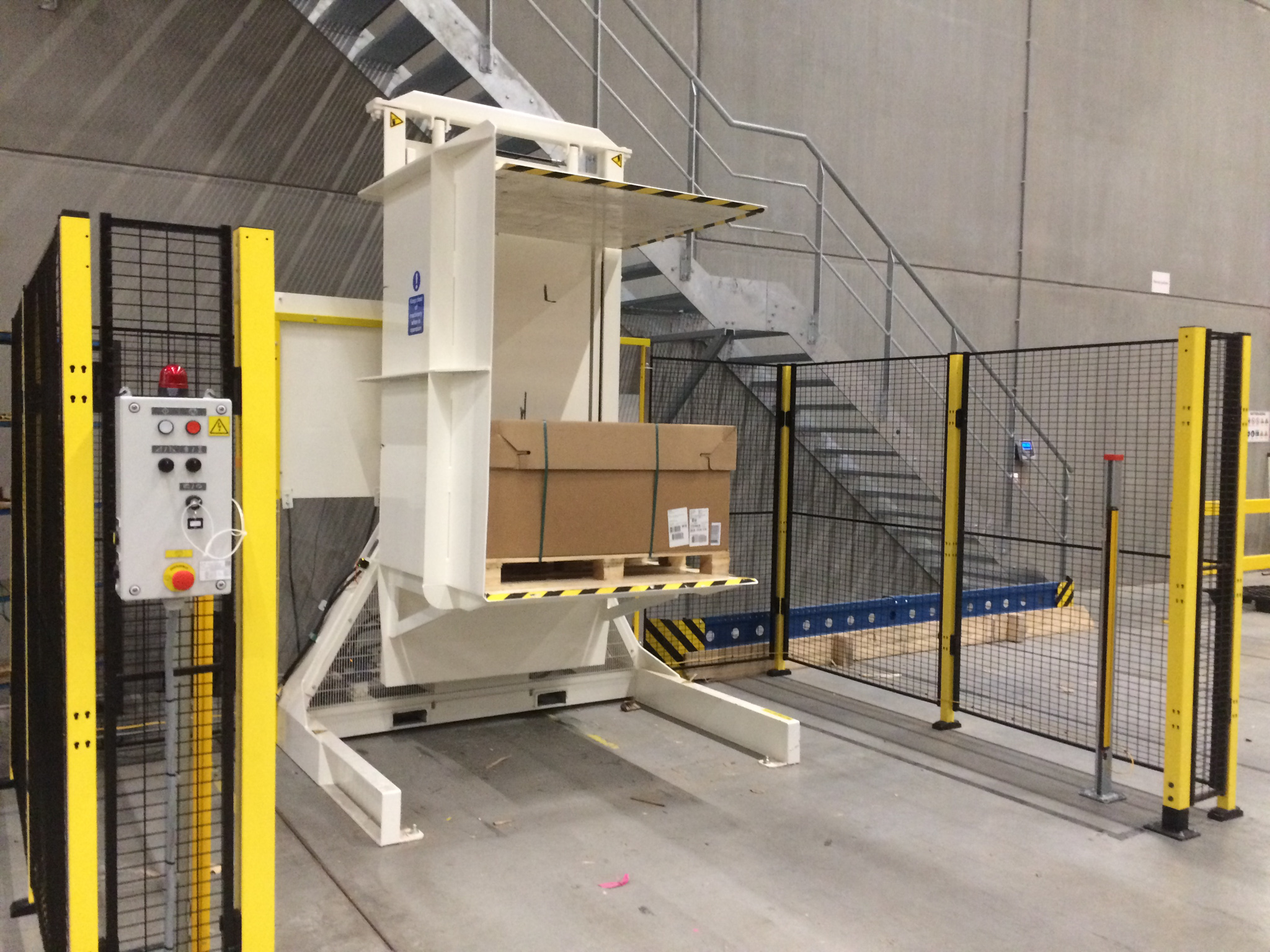
I understand the hesitation. As an engineer and factory owner myself, my first thought about any new piece of equipment is always about the return on investment. You're likely wondering if this is just another complex machine to buy and maintain. I've been there. But I've also seen the other side. I've seen how a single, smart investment can solve multiple, persistent problems and pay for itself much faster than expected. Let’s look past the price tag for a moment. Let's break down exactly how a pallet changer can become a cornerstone of a safer, more efficient, and more profitable operation for your factory.
How can a pallet changer solve the stability issues common in coastal environments?
The sea air is great for a vacation, but it is a constant challenge for industrial operations. Wooden pallets, the workhorse of logistics, can become a serious liability in humid, coastal regions like those found across Greece. They act like sponges, absorbing moisture from the air. This makes them swell, warp, and lose their structural integrity. Suddenly, a pallet that looked fine is now the weak link in your entire supply chain, ready to fail under load. The result is unstable stacks, damaged products, and a hazardous workplace. But what if you could sidestep this problem entirely? A pallet changing machine gives you a simple, powerful way to take control. It allows you to switch your goods from a potentially compromised wooden pallet to a robust, reliable in-house or shipping pallet just when you need to.
A pallet changer directly solves stability problems in coastal areas by enabling a quick and secure transfer of goods. The machine firmly holds your products in place while it swaps the pallet underneath. This means you can receive goods on standard wooden pallets and immediately move them onto moisture-resistant plastic or metal pallets for storage in your facility. These materials are unaffected by humidity. They do not warp or weaken. This single step ensures your loads remain stable and secure, from the moment they enter your warehouse to the moment they leave.
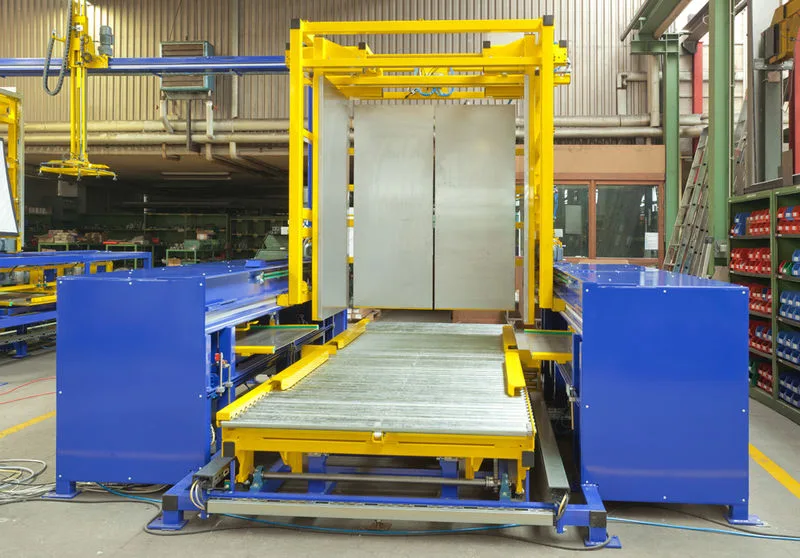
The Enemy Within: Moisture and Pallet Degradation
In a coastal factory, the air itself can be a corrosive agent. It’s not just water; it’s saltwater. This combination is particularly destructive to standard wooden pallets. The moisture causes the wood fibers to expand and weaken, reducing the pallet's load-bearing capacity. The salt accelerates the corrosion of nails and fasteners, further compromising the pallet's structure. I once visited a food processing plant near Piraeus, and their warehouse was filled with the constant, low-level anxiety of teetering stacks. Their wooden pallets, exposed to the sea breeze, were visibly sagging.
Switching to a different pallet material is the obvious solution for internal handling. Plastic pallets are the most common choice. They are impervious to moisture, easy to clean, and have a very long lifespan. They provide a consistent and reliable base for your products. A pallet changer is the bridge that makes this switch practical and efficient.
| Pallet Material | Performance in Coastal Environment | Key Advantages | Key Disadvantages |
|---|---|---|---|
| Wood | Poor | Low initial cost, widely available. | Absorbs moisture, warps, splinters, prone to contamination. |
| Plastic | Excellent | Impervious to moisture, durable, hygienic, long lifespan. | Higher initial cost, can be slippery when wet. |
| Metal (Steel/Alu) | Very Good | Highest strength, extremely durable. | High cost, heavy, susceptible to rust if not treated. |
The Mechanics of a Perfect Transfer
The genius of a pallet changer is not just that it swaps pallets, but how it does it. The process is designed to protect the integrity of the load at all times. There are two main types of machines I recommend.
A pallet inverter clamps the load from the top and bottom. It then rotates the entire load 180 degrees. The old pallet is now on top and can be easily removed. A new pallet is placed on the load, and the machine rotates back. This method is fantastic for stable, boxed goods.
A pallet pusher or exchanger is different. It gently clamps the load from the sides. Then, a pusher plate smoothly slides the entire load from the old pallet to the new pallet, which is waiting right next to it. This is the ideal solution for more delicate or unstable loads, like bags, pails, or non-uniform stacks. There is no tipping or inverting. The load stays upright the entire time. I’ve seen this work wonders for a chemical company handling large bags of powder. Their manual re-stacking process was slow and created a lot of dust. The pallet pusher made the process clean, fast, and safe.
When you look at your budget, you see the clear costs: labor, materials, energy. But what about the costs that don't show up as a neat line item? When your team is manually re-stacking a wobbly pallet, the hidden costs start to multiply. It’s a slow, inefficient process that puts your employees at risk. Every time a box is dropped, a bag is torn, or worse, an employee strains their back, your business is losing money. These incidents seem small one by one, but they add up to a significant drain on your resources and productivity. You are paying for the problem every single day. The solution is to change the process. By automating the transfer of loads with a pallet changer, you directly address these hidden costs and turn a dangerous liability into a streamlined asset.
The most significant hidden costs of manually handling unstable loads are tied to safety, product loss, and inefficiency. Manual lifting of heavy and awkward items is a leading cause of workplace injuries, resulting in medical bills, insurance hikes, and lost workdays. Dropped or damaged products are a direct loss of revenue and can harm your reputation. Finally, the sheer amount of time and labor spent on manual re-stacking is a massive operational bottleneck that a machine can resolve in a fraction of the time.
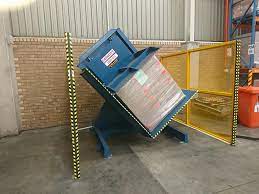
Quantifying the "Invisible" Expenses
Let's get specific. As a factory owner, I learned that you must measure what you want to improve. These hidden costs are not invisible if you know where to look. They appear in your insurance premiums, your waste disposal records, your overtime pay, and your shipping logs.
First, consider the cost of a single back injury. It’s not just the immediate medical treatment. You have indirect costs that are often four to five times higher.
| Hidden Cost Category | Example Expenses | Estimated Financial Impact (per incident) |
|---|---|---|
| Direct Injury Costs | Medical Bills, Emergency Services, Insurance Deductible | €2,000 - €5,000 |
| Indirect Injury Costs | Lost Productivity, Overtime for Replacement Staff, Admin Time (reports, claims), Retraining Costs, Decreased Team Morale | €8,000 - €25,000 |
| Product Damage Costs | Value of Lost Goods, Cleanup Labor, Disposal Fees, Production Halt/Restart | €500 - €10,000+ (depending on product) |
| Inefficiency Costs | Labor Hours for Manual Restacking, Shipping Delays, Bottlenecks at Loading Dock | Varies, but can equal thousands in lost output per month |
From a Single Box to a Broken Supply Chain
A damaged product is rarely just one item. When an unstable pallet collapses, it can damage a significant portion of the load. I remember a client in the beverage industry. A single weak pallet led to a cascade failure that took out nearly a hundred cases of glass bottles. The loss wasn't just the product cost. It was the hours spent cordoning off the area and cleaning up broken glass. It was the delayed shipment to a key customer. It was the damage to the warehouse floor.
This ripple effect is a critical hidden cost. A single failure point—the pallet—can disrupt your entire logistics flow. It holds up forklifts, occupies valuable dock space, and can cause you to miss shipping windows. These small delays, compounded over a year, represent a huge loss of potential capacity. Automating the pallet swap with a machine that takes 60-90 seconds turns this bottleneck into a smooth, predictable part of your process. You are not just preventing accidents; you are buying back time and creating capacity you didn't know you had.
How do you choose the right pallet changing machine for your specific needs?
You are convinced that a pallet changer could solve some real problems. Now comes the hard part. Which one is right for you? Walking into this decision without a clear plan is like sailing without a map. There are many models and types, each designed for a different purpose. If you choose a machine that is too small for your loads, too slow for your throughput, or too aggressive for your products, you will have wasted a significant investment. You might end up with a machine that gathers dust in a corner because it creates more problems than it solves. To avoid this, you need to approach the decision like an engineer. You must start with a clear understanding of your own operation and your specific requirements.
To choose the right pallet changing machine, you must first conduct a thorough analysis of your process. This involves defining your load characteristics, such as maximum weight, dimensions, and product fragility. You also need to calculate your required throughput in pallets per hour and measure the physical space available in your facility. Only after you have this data can you effectively compare models like pallet inverters, pallet pushers, or tippers and select the one that is a perfect fit for your operational needs and budget.
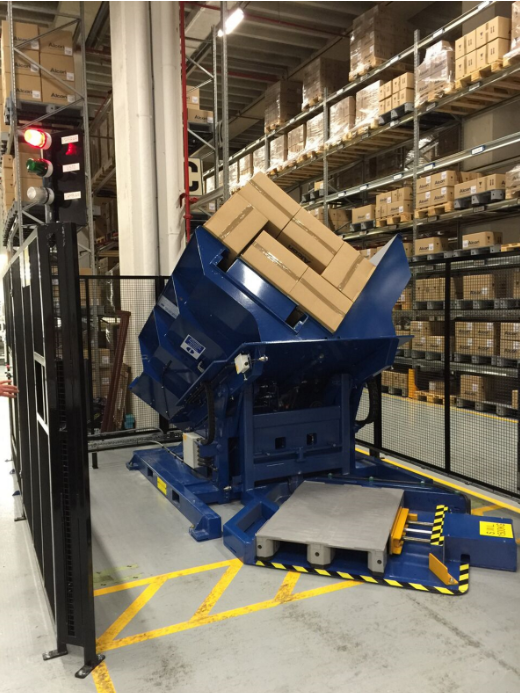
A Framework for Your Decision
Making a good decision requires good data. Before you even talk to a supplier, you should have the answers to these questions. I use a simple checklist with my clients to guide them through this process. It helps turn a complex choice into a series of simple questions.
Key Factors for Selecting a Pallet Changer
| Factor | Key Question(s) to Answer | Why It Matters |
|---|---|---|
| Load Characteristics | What is the max weight? What are the dimensions (L x W x H)? Is the product fragile, boxed, bagged, or liquid? | This is the most critical factor. It determines the required machine capacity and handling method (inverter vs. pusher). |
| Throughput Needs | How many pallets do you need to process per hour? Per shift? | This dictates the level of automation needed. A manual machine may be fine for 5 pallets/hour, but you'll need a semi-automatic or fully automatic line for 40 pallets/hour. |
| Operational Space | What is the available floor area? What is the ceiling height? | Pallet inverters require vertical clearance for rotation. Pushers require more floor space. You must ensure the machine physically fits. |
| Handling Process | Are you swapping to a different size pallet? Do you need to remove freezer spacers? Is hygiene critical (e.g., food/pharma)? | Your specific application will narrow down the options. For example, stainless steel construction is essential for food-grade environments. |
| Budget | What is your total budget for the project, including installation and training? | This helps filter options. But remember to focus on the total cost of ownership and ROI, not just the initial purchase price. |
Pallet Inverters vs. Pallet Pushers: A Deeper Look
Your two most likely options will be a pallet inverter or a pallet pusher. The choice between them depends almost entirely on your product.
Pallet Inverters: These machines clamp and rotate the load 180°.
- Best for: Sturdy, stable, block-stacked products like cans, bottles, or solid boxes.
- Advantages: They are often faster and can have a smaller footprint. They are also excellent for easily removing the top pallet.
- Considerations: Not suitable for delicate, loose, or oddly shaped loads that could shift during rotation. Think of a stack of open-top trays – an inverter would be a disaster.
Pallet Pushers/Exchangers: These machines slide the load from one pallet to another.
- Best for: Unstable or fragile loads like bags of grain, pails of paint, pharmaceuticals, or mixed-layer pallets.
- Advantages: Extremely gentle on the product. The load remains upright and stable throughout the transfer.
- Considerations: They typically require more floor space than an inverter and may have a slightly slower cycle time.
I helped a client who distributed bags of fertilizer. They initially wanted an inverter because it seemed simpler. But after we analyzed their product, we realized the bags would slump and deform during rotation. We switched the recommendation to a pallet pusher. It was the right call. It worked perfectly and prevented any product damage. This is why a deep analysis of your own product is the most important step.
My Insights: Beyond the Machine – A Partnership for Success
You can do all the research, compare all the specs, and buy the most advanced machine on the market. But I have learned a hard lesson over my 25 years in this industry: the machine itself is only half of the solution. The real challenge, and the true key to success, is making that machine a profitable, reliable part of your daily operations for the next decade. Many suppliers are great at making a sale. They will tell you everything you want to hear. But what happens after the check is cashed? Too often, they disappear. You are left alone to figure out complex installation, train confused operators, and hunt for spare parts when there is a breakdown. This is a massive risk. You are not just buying steel and motors. You are making a strategic investment. You need more than a supplier. You need a partner.
A successful equipment investment is built on a relationship, not just a transaction. The right partner works with you before the sale to deeply understand your problem. They support you during installation and training. And they stand by you after the machine is running to ensure you achieve the efficiency, safety, and return on investment you were promised. This partnership approach transforms a capital expense into a long-term competitive advantage.
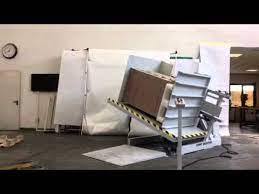
My Journey Taught Me This Lesson
I wasn't always a factory owner. I started my career as an engineer on the factory floor. I know the deep frustration of watching a critical machine fail during a peak production run. I know what it’s like to wait for days for a technician or a simple spare part while pressure from management mounts. When I finally had the chance to build my own factory, SHJLPACK, I made a promise to myself. I would be the kind of partner I always wished I had.
My goal was never just to sell packing machines. It was to sell solutions. It was to help my clients, like Javier Morales who runs a massive steel plant in Mexico, to not just solve a single problem but to improve their entire process. We didn't just sell him a coil wrapper; we analyzed his workflow, suggested improvements, and provided training that made his whole team more effective. Helping my clients grow their business is what allowed me to achieve my own success. This philosophy is at the core of everything we do. It’s why I started this knowledge-sharing platform—to give back and help others succeed.
What a Real Partnership Looks Like
So, when you are evaluating a supplier for a pallet changer, or any machine, don't just look at their brochure. Ask them hard questions about their process and their support. A true partner will offer:
- Consultative Analysis: They won't start by showing you machines. They will start by asking about your problems, your products, and your goals. They will act more like a consultant than a salesperson.
- Customization: A good partner knows that one size does not fit all. They should be able to modify their equipment to perfectly fit your needs, whether it's a custom dimension, a specific paint finish, or integration with your existing software.
- Transparent Commissioning: They will provide a clear plan for installation and startup. Their technicians won't leave until your machine is running smoothly and your team feels confident.
- Comprehensive Training: They should train not only your operators on how to run the machine but also your maintenance staff on how to care for it. Good training is the number one way to maximize uptime.
- Proactive Support: A great partner doesn't wait for your call. They might check in periodically. Most importantly, they have a robust system for providing technical support and spare parts quickly and efficiently.
Choosing a partner with this mindset is how you guarantee the long-term ROI of your investment. The machine will run better, last longer, and deliver more value over its lifetime.
Conclusion
A pallet changing machine is a practical tool for any coastal factory facing load stability issues. It directly improves safety, reduces product damage, and boosts operational efficiency. Choose the right machine, and more importantly, choose the right partner to ensure your long-term success.

